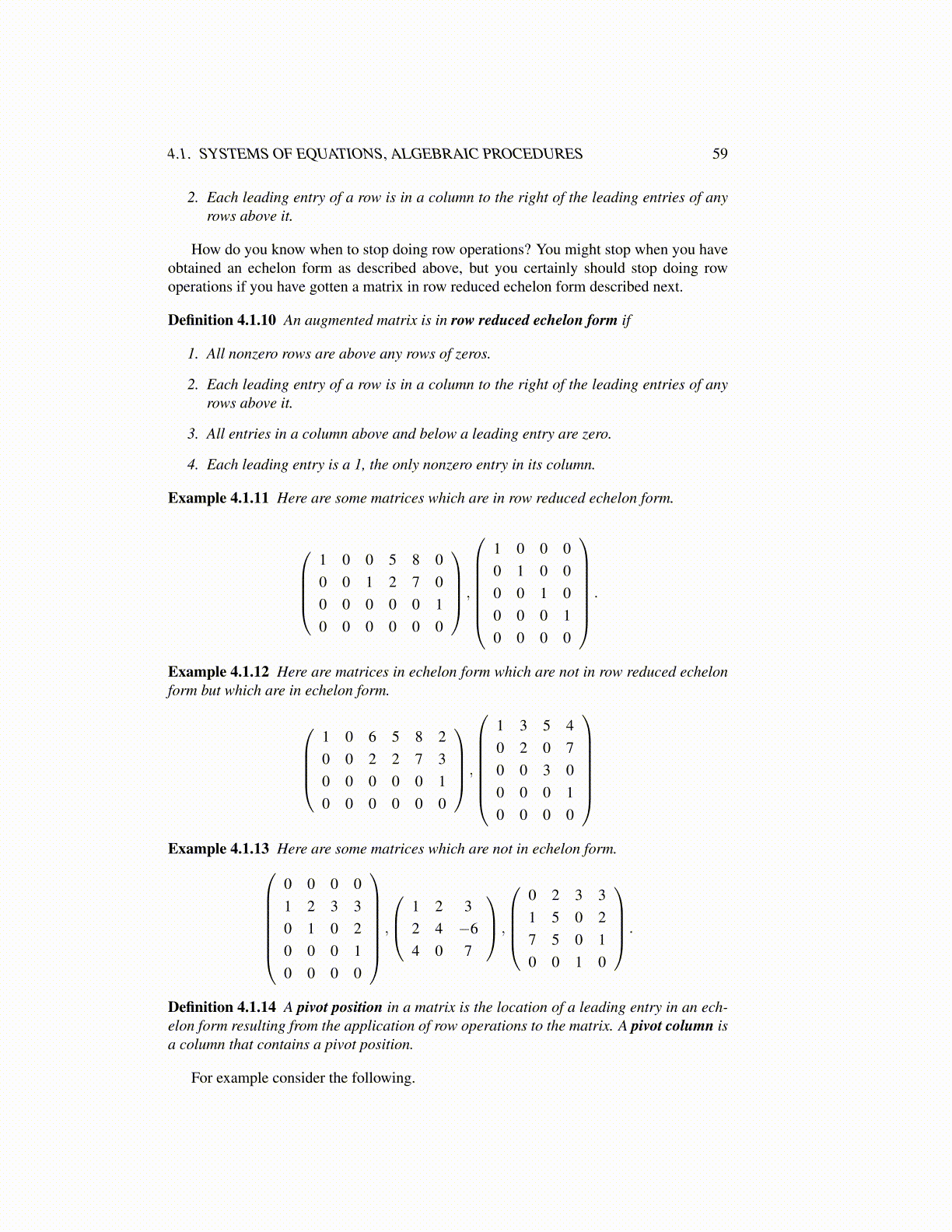
4.1. SYSTEMS OF EQUATIONS, ALGEBRAIC PROCEDURES 59
2. Each leading entry of a row is in a column to the right of the leading entries of anyrows above it.
How do you know when to stop doing row operations? You might stop when you haveobtained an echelon form as described above, but you certainly should stop doing rowoperations if you have gotten a matrix in row reduced echelon form described next.
Definition 4.1.10 An augmented matrix is in row reduced echelon form if
1. All nonzero rows are above any rows of zeros.
2. Each leading entry of a row is in a column to the right of the leading entries of anyrows above it.
3. All entries in a column above and below a leading entry are zero.
4. Each leading entry is a 1, the only nonzero entry in its column.
Example 4.1.11 Here are some matrices which are in row reduced echelon form.
1 0 0 5 8 00 0 1 2 7 00 0 0 0 0 10 0 0 0 0 0
,
1 0 0 00 1 0 00 0 1 00 0 0 10 0 0 0
.
Example 4.1.12 Here are matrices in echelon form which are not in row reduced echelonform but which are in echelon form.
1 0 6 5 8 20 0 2 2 7 30 0 0 0 0 10 0 0 0 0 0
,
1 3 5 40 2 0 70 0 3 00 0 0 10 0 0 0
Example 4.1.13 Here are some matrices which are not in echelon form.
0 0 0 01 2 3 30 1 0 20 0 0 10 0 0 0
,
1 2 32 4 −64 0 7
,
0 2 3 31 5 0 27 5 0 10 0 1 0
.
Definition 4.1.14 A pivot position in a matrix is the location of a leading entry in an ech-elon form resulting from the application of row operations to the matrix. A pivot column isa column that contains a pivot position.
For example consider the following.